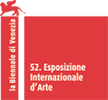| |
da una lettera ad un amico,
Berlino, luglio 1964
...Il plurimo, in sé - prima di una teoria di
movimento, di multiple possibilità, è la necessità
di mobilitare i vari piani gestuali, lo spingersi di
questi nello spazio: nel quotidiano, tra noi. Come
presenza, come subito-gesto-dichiarazione,
pittura che "si fa" nel suo muoversi. Nel caso di
questi miei plurimi berlinesi, una simultaneità
di presenze, sentimenti -, fatti avvenuti, che
avvengono, che non possono non provocare
chi arriva in questa città gravida di diverse
"paure": ieri, oggi, di latente dimenticanza;
di equivoci; di malinconie anacronistiche; di
reciproci antagonismi sovreccitati; di scontri di
situazioni.
A Berlino sono tornato, sono venuto a lavorare
per rendermi conto, de visu, ancora, poter
rintracciare, dopo le mostruose incrostazioni
naziste, nelle strade, nella sua inquieta babelica
vita, lo spirito democratico, critico, che animò
un tempo Grosz Dix, Beckann,..Dada Berlin!
Emilio Vedova |
|
from a Letter to a Friend,
Berlin, July 1964
...on the contrary, the plurimo, in and of itself-more
than a theory of movement, of multiple possibilities,
is the necessity to mobilize the various gestural
planes, the pushing of these into space: into the
every day, among us. As a presence, as immediacy-
gesture-declaration, painting that "becomes" in
its movement. In the case of the Berlin plurimi, a
simultaneity of presences, feelings -, facts that
occurred, that are occurring and that cannot help
but provoke those who arrive in this city, fraught
with various "fears:" yestreday, today, why:out of
latent forgetfulness; equivocations; anachronistic
melancholy; reciprocal, overwrought antagonism;
collisions of situations.
I returned to Berlin, I went there to work, to see for
myself de visu, again, to be able to retrace, after
the monstrous Nazi incrustations, in the streets,
in its disturbing Babel-like life, the democratic,
critical spirit, thet once animated Grosz, Dix,
Beckmann.. Dada Berlin!
Emilio Vedova |
|
